13 Best Herbal Creams For Aging
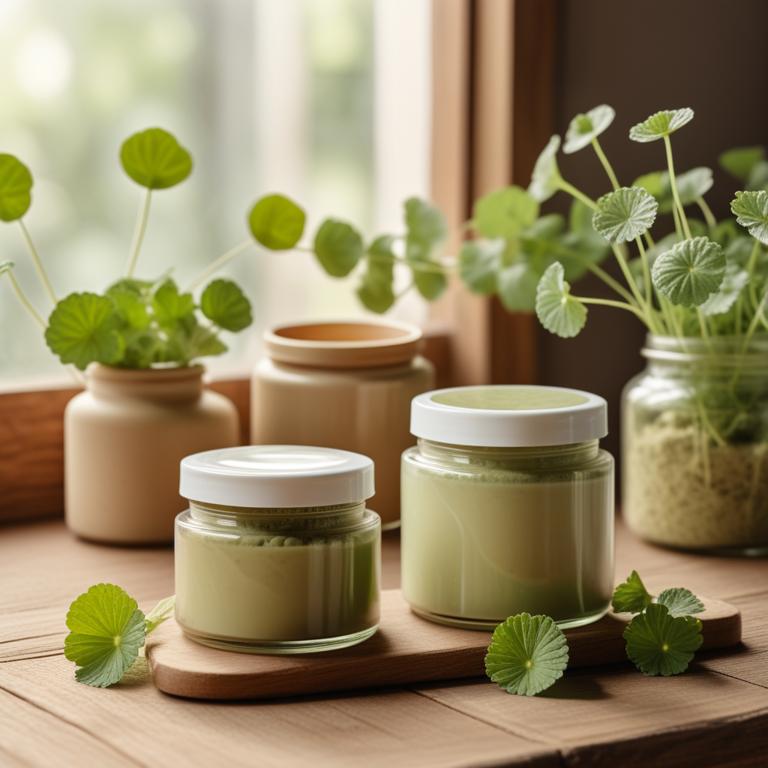
Herbal creams for Aging are topical creams or ointments infused with herbal extracts and essential oils, designed to address signs of aging such as fine lines, wrinkles, and age spots.
These creams offer numerous benefits, including improved skin elasticity, reduced inflammation, and enhanced collagen production, all of which contribute to a more youthful and radiant appearance.
Popular examples of herbal creams for aging include those containing aloe vera, which soothes and moisturizes the skin, and those containing green tea, which has antioxidant properties that combat free radicals and promote healthy skin.
Additionally, creams made with ginseng, chamomile, and lavender are also commonly used to treat aging, as they help to reduce stress, promote relaxation, and improve skin texture.
According to "Current medicinal chemistry", creams for aging can be beneficial with the use of natural products derived from plants such as carnosic acid, curculigoside, curcumin, and rosmarinic acid, which have been shown to inhibit tyrosinase, hyaluronidase, elastase, and collagenase, and contribute to protecting skin from wrinkles.
Below there's a list of the 13 best herbal creams for aging.
- 1. Aloe vera creams
- 2. Ginkgo biloba creams
- 3. Glycyrrhiza glabra creams
- 4. Panax ginseng creams
- 5. Camellia sinensis creams
- 6. Curcuma longa creams
- 7. Rosmarinus officinalis creams
- 8. Melissa officinalis creams
- 9. Vitis vinifera creams
- 10. Silybum marianum creams
- 11. Hypericum perforatum creams
- 12. Zingiber officinale creams
- 13. Avena sativa creams
Also you may be interested in...
TODAY'S FREE BOUNDLE
Herb Drying Checklist + Herbal Tea Shopping List + Medicinal Herbs Flashcards
Enter you best email address below to receive this bundle (3 product valued $19.95) for FREE + exclusive access to The Aphotecary Letter.
$19.95 -> $0.00
1. Aloe vera creams

Aloe vera creams are widely used to treat the aging ailment, also known as photoaging, due to their exceptional moisturizing and anti-aging properties.
The glycoproteins, vitamins, and minerals present in aloe vera creams help to repair and regenerate skin cells, reducing the appearance of fine lines and wrinkles.
The bioactive constituents, including aloin, aloe-emodin, and acemannan, exhibit potent antioxidant and anti-inflammatory activities, which aid in protecting the skin from further damage and promoting collagen synthesis.
Regular application of aloe vera creams can provide numerous benefits, including improved skin elasticity, reduced age spots, and enhanced skin texture, making it an effective and natural solution for treating the aging ailment.
Related Study
According to the study found in the Brazilian journal of biology, Aloe vera creams for aging may be beneficial due to its antioxidant properties, as it contains polyphenols and flavonoids, which help in free radical scavenging and protection against oxidative stress, potentially contributing to skin rejuvenation and healing.
2. Ginkgo biloba creams

Ginkgo biloba creams have been traditionally used to treat the aging ailment, also known as telomere shortening and cellular degeneration, by providing antioxidant properties and improving blood circulation.
The flavonoids and terpenoids present in Ginkgo biloba creams, such as quercetin, kaempferol, and bilobalide, help to neutralize free radicals and promote cellular health, thereby reducing the visible signs of aging.
This herbal preparation also helps to boost collagen production, improve skin elasticity, and reduce fine lines and wrinkles, resulting in a more youthful and radiant appearance.
The benefits of using Ginkgo biloba creams to treat the aging ailment include improved skin texture, reduced age spots, and enhanced overall skin health, making it a popular choice among those seeking a natural and non-invasive anti-aging solution.
Related Study
According to "Drug development and industrial pharmacy", Ginkgo biloba creams for aging show potential in rejuvenating the skin, reducing wrinkles, and improving skin texture due to their antioxidant properties and ability to scavenge free radicals.
3. Glycyrrhiza glabra creams

Glycyrrhiza glabra creams, derived from the roots of the licorice plant, have been traditionally used to treat various aging ailments, including wrinkles and age spots.
The anti-inflammatory and antioxidant properties of these creams help to reduce the visible signs of aging by soothing and protecting the skin.
The bioactive constituents of Glycyrrhiza glabra, including glycyrrhizin and flavonoids, contribute to its anti-aging effects by inhibiting the production of pro-inflammatory enzymes and promoting collagen production.
The regular use of Glycyrrhiza glabra creams can help to improve skin elasticity, reduce fine lines and wrinkles, and give the skin a smoother and more youthful appearance.
4. Panax ginseng creams
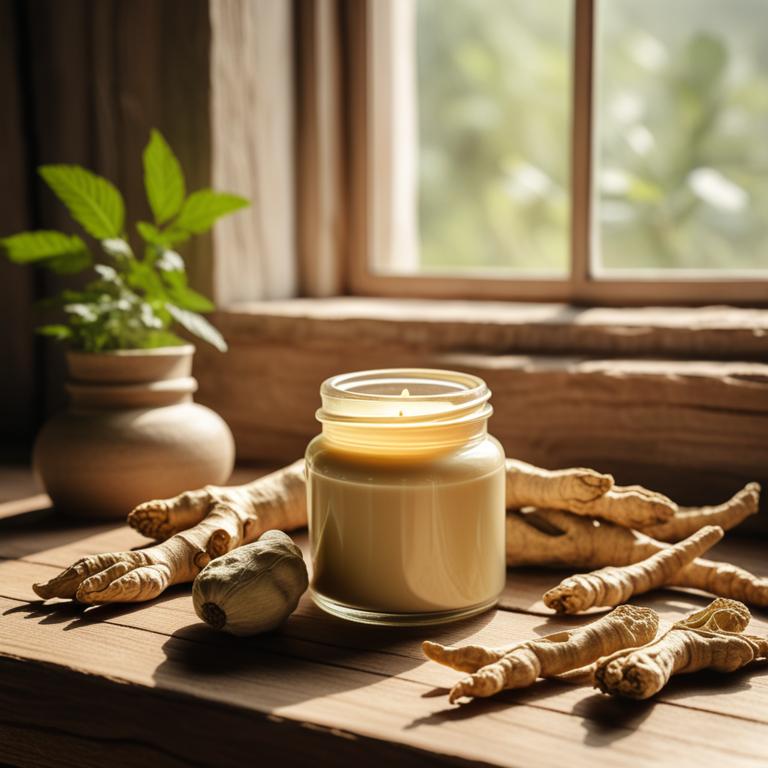
Panax ginseng creams have been found to be effective in treating the aging ailment due to their rich content of bioactive constituents such as ginsenosides, which have been shown to possess anti-inflammatory and antioxidant properties.
These properties help to reduce the visible signs of aging, including fine lines and wrinkles, by promoting collagen production and improving skin elasticity.
The ginsenosides in Panax ginseng creams also help to improve blood circulation, which can lead to a more youthful and radiant appearance.
Regular use of Panax ginseng creams has been reported to have numerous benefits, including improved skin texture, reduced age spots, and a more even tone, making it a popular natural remedy for anti-aging.
Related Study
According to "Journal of ethnopharmacology", Panax ginseng creams for aging may be effective in reducing wrinkle formation caused by UVB irradiation due to the inhibition of collagen degradation by Korean red ginseng extract.
5. Camellia sinensis creams
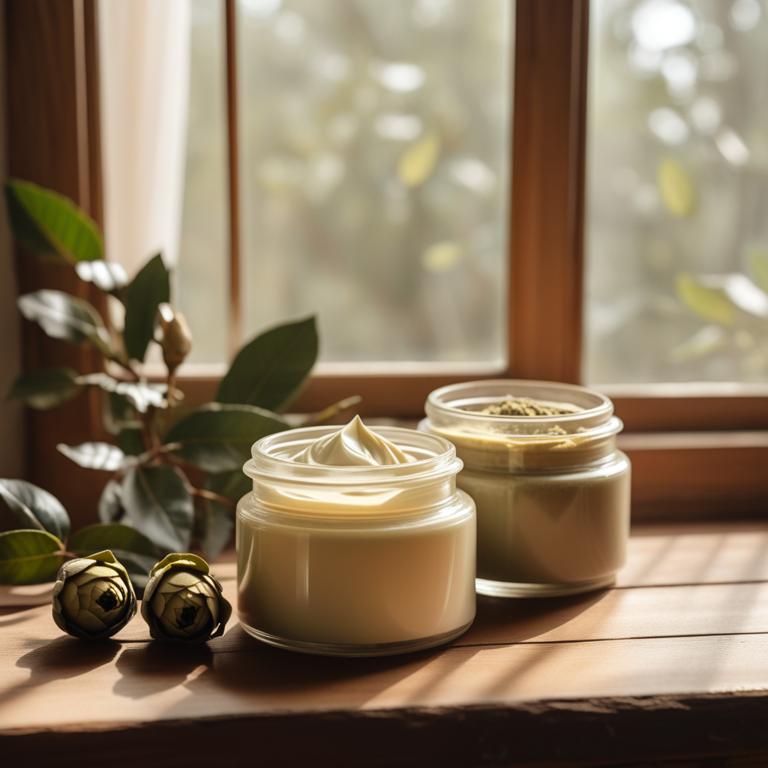
Camellia sinensis creams, derived from the leaves of the Camellia sinensis plant, are a popular herbal preparation used to treat the aging ailment of skin aging.
The properties of this herbal preparation, rich in antioxidants and flavonoids, help to treat this ailment by protecting the skin from damage caused by free radicals, thereby reducing the visible signs of aging such as fine lines, wrinkles, and age spots.
The bioactive constituents of Camellia sinensis creams, including epigallocatechin gallate (EGCG) and quercetin, help to treat this ailment by promoting collagen production, improving skin elasticity, and reducing inflammation.
The benefits of this herbal preparation in treating the aging ailment include improved skin texture, reduced appearance of fine lines and wrinkles, and a more youthful and radiant complexion.
6. Curcuma longa creams

Curcuma longa creams have been gaining popularity as a natural remedy to combat the aging process due to their rich antioxidant and anti-inflammatory properties.
The bioactive constituents of Curcuma longa creams, including curcumin, demethoxycurcumin, and bisdemethoxycurcumin, play a significant role in treating the aging ailment by protecting the skin from oxidative stress, promoting collagen production, and improving skin elasticity.
These creams help to treat the aging ailment by reducing fine lines and wrinkles, improving skin texture, and enhancing overall skin appearance.
The benefits of using Curcuma longa creams to treat the aging ailment include improved skin health, reduced signs of aging, and a more youthful and radiant appearance.
Related Study
According to "Degenerative neurological and neuromuscular disease", Curcuma longa creams for aging may be beneficial due to their anti-inflammatory and antioxidant effects, potentially mitigating neuroinflammation and oxidative stress associated with aging.
7. Rosmarinus officinalis creams
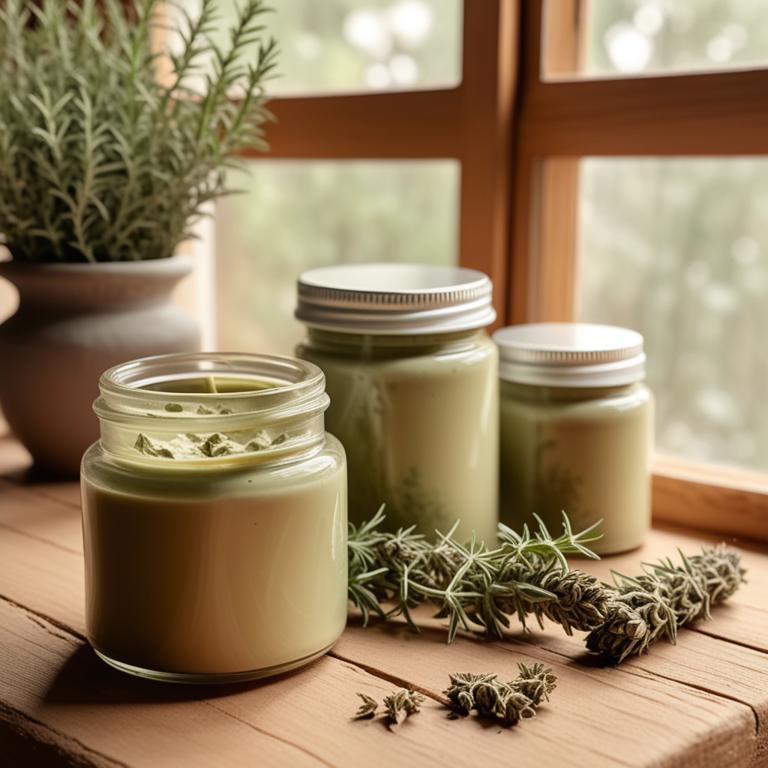
Rosmarinus officinalis creams, derived from the leaves of the rosemary plant, possess anti-aging properties that help to treat the aging ailment by reducing fine lines and wrinkles, promoting collagen production, and improving skin elasticity.
The bioactive constituents of Rosmarinus officinalis creams, including carnosic acid, ursolic acid, and camphor, help to inhibit the activity of pro-aging enzymes, reduce inflammation, and protect the skin from oxidative damage.
By using Rosmarinus officinalis creams, individuals can experience improved skin texture, reduced appearance of aging signs, and a more youthful appearance.
The benefits of this herbal preparation include enhanced skin health, reduced risk of age-related diseases, and a natural and non-invasive approach to anti-aging skincare.
Related Study
According to "RSC advances", Rosmarinus officinalis creams for aging are effective due to their high total phenolic content, potent antioxidant properties, and ability to inhibit the activity of tyrosinase, elastase, and collagenase enzymes.
8. Melissa officinalis creams
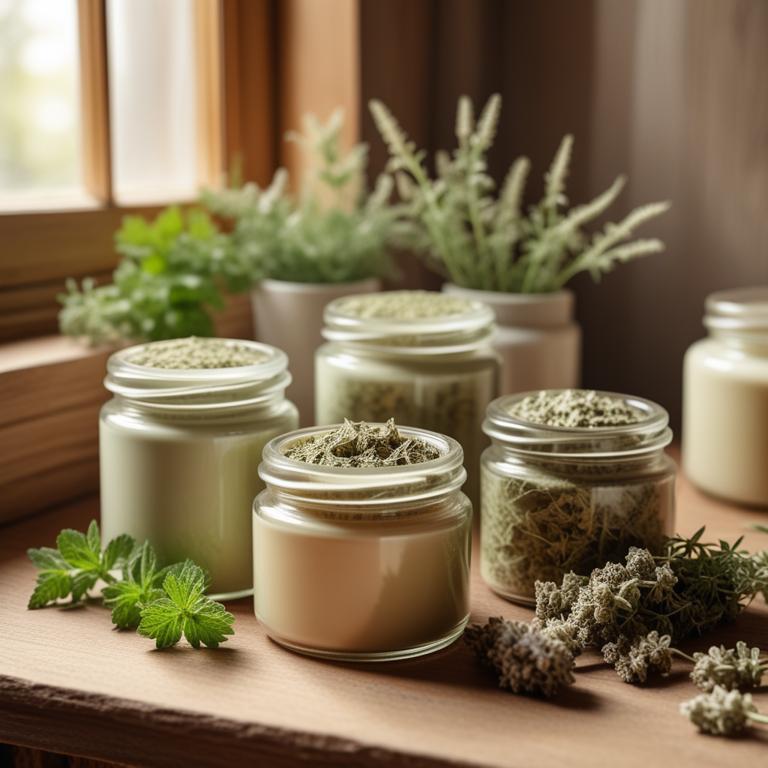
Melissa officinalis creams have been increasingly used to treat the aging ailment due to their remarkable properties that help to alleviate its symptoms.
This herbal preparation possesses anti-inflammatory and antioxidant properties, which help to reduce the visible signs of aging, such as fine lines and wrinkles.
The bioactive constituents of Melissa officinalis creams, including linalool and linalyl acetate, help to protect the skin from oxidative stress and promote the production of collagen, thereby contributing to a smoother and more youthful appearance.
By using Melissa officinalis creams, individuals can benefit from improved skin elasticity, reduced age spots, and a more radiant complexion, ultimately leading to a more youthful and revitalized appearance.
9. Vitis vinifera creams
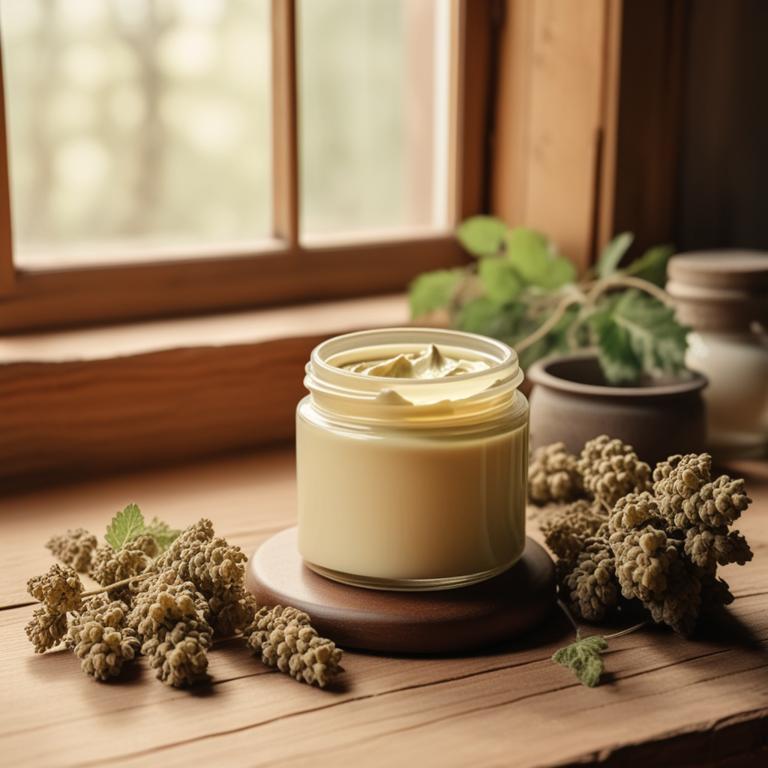
Vitis vinifera creams, derived from the grapevine plant, have been used to treat the aging ailment, also known as photoaging, due to their rich antioxidant and anti-inflammatory properties.
The bioactive constituents of Vitis vinifera creams, such as resveratrol, flavonoids, and phenolic acids, help to protect the skin from damage caused by UV radiation and promote collagen production, thereby reducing fine lines and wrinkles.
The anti-aging properties of Vitis vinifera creams help to improve skin elasticity, firmness, and texture, resulting in a more youthful and radiant appearance.
The benefits of using Vitis vinifera creams to treat photoaging include improved skin health, reduced appearance of fine lines and wrinkles, and a more even skin tone, making it an effective natural remedy for aging skin.
Related Study
According to the study, Vitis vinifera creams for aging may exert anti-aging action via a panoply of signalling systems, including scavenging reactive oxygen and nitrogen species and improving survival genes and functions.
10. Silybum marianum creams
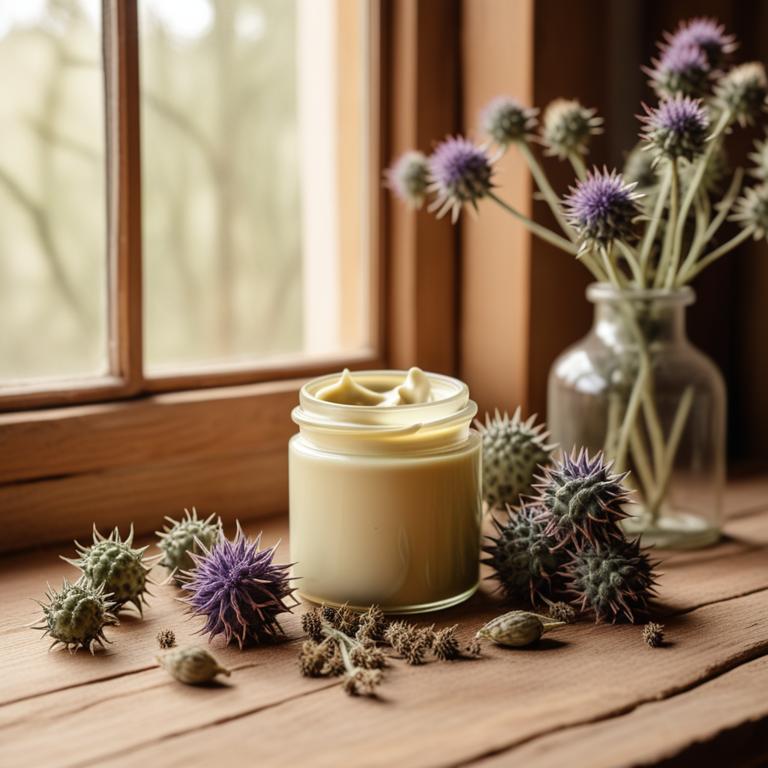
Silybum marianum creams, also known as milk thistle creams, have been traditionally used to treat various skin issues associated with aging, such as fine lines, wrinkles, and age spots.
The anti-inflammatory and antioxidant properties of these creams help to reduce the appearance of these aging symptoms by protecting the skin from damage caused by free radicals and promoting collagen production.
The bioactive constituents of milk thistle, including silymarin and flavonoids, have been found to contribute to its anti-aging effects by scavenging free radicals and inhibiting the activity of pro-inflammatory enzymes.
The regular use of Silybum marianum creams can help to improve skin elasticity, reduce the appearance of fine lines and wrinkles, and promote a more youthful and radiant complexion.
11. Hypericum perforatum creams

Hypericum perforatum creams, also known as St. John's Wort creams, have been traditionally used to treat the aging ailment of age-related skin damage and wrinkles.
The anti-inflammatory and antioxidant properties of this herbal preparation help to protect the skin from environmental stressors and promote collagen production, reducing the appearance of fine lines and wrinkles.
The bioactive constituents of Hypericum perforatum, including flavonoids, phenolic acids, and naphthodianthrone, contribute to its anti-inflammatory and antioxidant effects, which help to improve skin elasticity and texture.
The benefits of using Hypericum perforatum creams for age-related skin damage include improved skin appearance, reduced inflammation, and enhanced collagen production, resulting in a more youthful and radiant complexion.
12. Zingiber officinale creams

Zingiber officinale creams have been widely used to treat the aging ailment, primarily due to their anti-inflammatory, antioxidant, and anti-aging properties.
These creams help to treat the aging ailment by reducing fine lines and wrinkles, promoting collagen production, and improving skin elasticity.
The bioactive constituents of Zingiber officinale, including gingerol, shogaol, and zingerone, contribute to its anti-aging effects by inhibiting the activity of enzymes that break down collagen and by scavenging free radicals that cause oxidative stress.
The benefits of using Zingiber officinale creams to treat the aging ailment include improved skin texture, reduced appearance of fine lines and wrinkles, and enhanced overall skin health.
13. Avena sativa creams
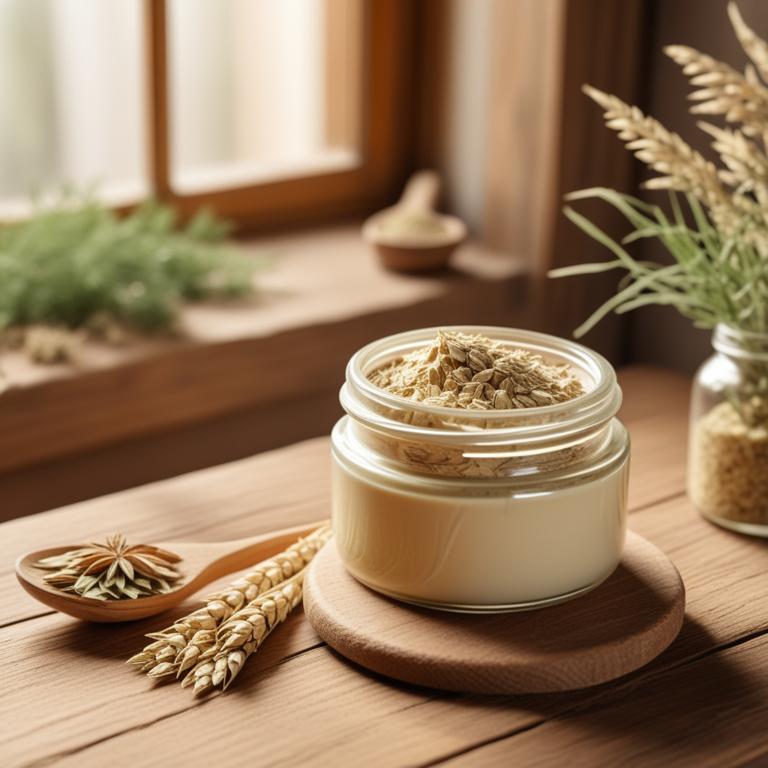
Avena sativa creams, derived from the oat plant, have been found to be effective in treating the aging ailment known as senile dermatitis.
The anti-inflammatory and soothing properties of Avena sativa creams help to reduce redness and itching associated with senile dermatitis, providing relief to affected skin.
The bioactive constituents of Avena sativa, including avenanthramides, beta-glucans, and phenolic acids, play a crucial role in reducing inflammation and promoting skin health.
By using Avena sativa creams, individuals can experience the benefits of improved skin elasticity, reduced fine lines, and a more youthful appearance, making it a popular natural remedy for anti-aging.
Related Study
According to the provided study, Avena sativa creams for aging may have antiaging potential due to their properties that can delay the aging process in humans, such as enhancing gene longevity and telomerase activity, scavenging free radicals, and regenerating tissues.